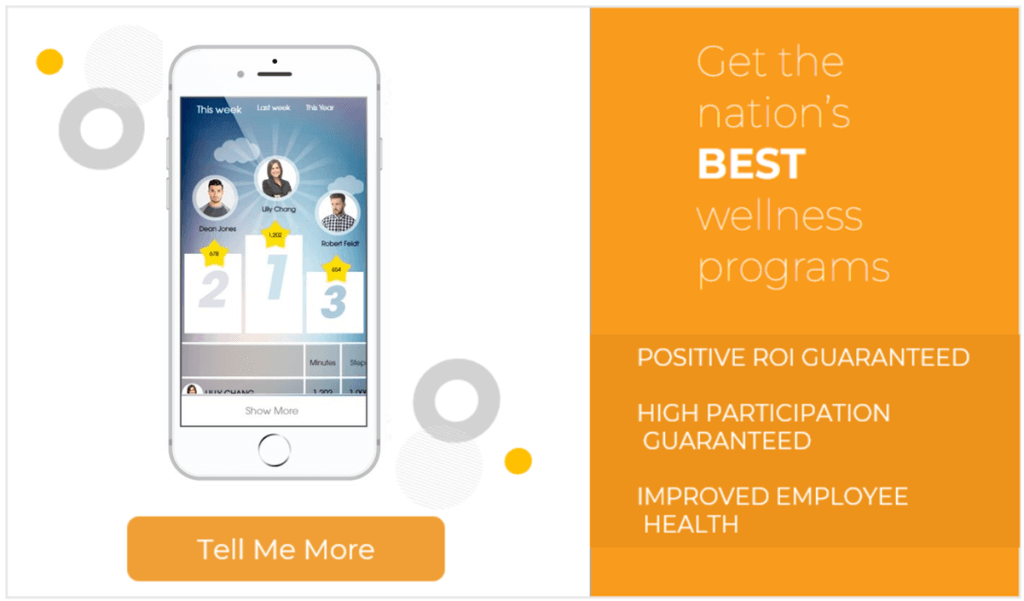It goes without saying that employees are integral to any organization. In fact, being able to increase employee productivity of its employees can make or break a business. What happens on the ground is what creates the most impact on business performance, courtesy of the company’s greatest asset: its workforce.
“Productivity is never an accident. It is the result of a commitment to excellence, intelligent planning, and focused effort.” - Paul Meyer
When unmet targets and unfinished projects are becoming a norm in the workplace, effective solutions must be taken. It’s best to take a serious look at what’s causing the slump to avoid or minimize the consequences.
What are the usual reasons behind low productivity? How do you counter it? How do you turn lack of motivation around? Before we discuss all these, let’s first have a good grasp of what employee productivity means.
What Is Workplace Productivity?
Workplace productivity is the amount of work that employees are able to cover over a period of time. A company’s objective should be to maximize productivity without compromising quality. The key here is efficiency, which equates to accomplishing as much quality work as possible within the least amount of time.

Lest it be misunderstood, this is not just about how much effort you put into something, but how good the output is while resources are maximized. In the context of employee productivity, this is where working hard versus working smart comes in.
Working hard is pushing yourself almost to your limit to complete a task within a required period, while working smart is efficiently and strategically using resources to produce the same or even better results. Smart productivity is when you accomplish much without being exhausted, depleting resources, or sacrificing quality. This is the essence of how to increase employee productivity.
Working hard is pushing yourself almost to your limit to complete a task within a required period, while working smart is efficiently and strategically using resources to produce the same or even better results.
Improving efficiency should be the emphasis if the company wants to get the best from its people without draining the energy and life out of them. Because when employees become overworked, productivity levels will not be sustained and eventually go down, dragging the bottom line along with it.
RELATED: Healthy Employees: An Important Factor For Workplace Productivity
What Is Absenteeism and Presenteeism?
Low productivity is usually caused by two things: absenteeism and presenteeism.
Absenteeism is when employees habitually fail to report to work for reasons ranging from family emergencies, to sickness and burnout. They fail to do their work and if there is no reliever to temporarily take over the tasks, productivity is affected.
Presenteeism, on the other hand, is being present at work but accomplishing practically nothing. This happens when the employee appears to be doing something behind the desk but is actually just killing time hitting keys on the keyboard, talking to colleagues, or loitering around.

Both issues contribute to productivity deficit. Absenteeism is easier to spot but presenteeism could be worse because the employee is being paid and is consuming resources but not contributing significant work. There may also be a deliberate act of cheating the company that eventually leads to mistrust and a damaged relationship.
A company needs to look into signs of absenteeism and presenteeism to curb their adverse effects on productivity and company culture in general. Overlooking these negative patterns of behavior can foster their spread like an epidemic among workers. There should be zero tolerance for these and effective measures must be put in place to straighten out these tendencies before they become prevalent in the organization.
RELATED: 13 Office Wellness Ideas to Improve Employee Productivity in 2023
Solving Productivity Deficit: Where and How to Start?
Productivity deficit can be caused by several factors, but it is usually the byproduct of employees’ unmet needs that have negatively affected their well-being and performance. Absenteeism and presenteeism are usually triggered by physical or psychological issues, such as sickness, overwork, or not finding meaning in one’s work.
This is not to say that there are some workers who may simply be lazy to the core. But generally, it is about a lack of motivation in the workplace stemming from neglected needs. Oftentimes, poor performance and negative behavior are actually a call for help that needs attention and solution.
Overlooking the needs of your employees is like choosing to fail. It’s like driving a vehicle and expecting it to run optimally on low fuel. But how do you meet employees’ needs without the risk of inflating their egos? By genuinely caring about their well-being.
Overlooking the needs of your employees is like choosing to fail.
When you care, you can influence better. And, influencing is generally better than imposing because the former comes from a place of sound leadership while the latter, merely from a place of power.
Productivity Takes Work
Wanting a high productivity level from your workforce isn’t simply about giving them a job scope and expecting everything to run smoothly at full capacity. High productivity does not simply happen. While some people perform well even without a good push, sustaining it may not be as easy without management support.
Truth is, perceptive management requires that you know which buttons to push. Particularly, buttons to energize employees and inspire them to perform optimally. But, not out of obligation but out of love for what they do. To increase employee productivity, a combination of empathy and encouragement that meets a range of well-being needs is necessary.

A well-supported workforce helps bring forth high productivity, making the company more profitable. As a result, it becomes even more financially capable to support its employees and meet their needs. Ultimately, this turns into a positive cycle that fosters a mutually beneficial relationship between the company and its employees.
RELATED: Healthy Employees: An Important Factor For Workplace Productivity
What Factors Increase Employee Productivity?
How do we improve employee productivity? A good way to start is by looking at the factors that drive employees to be more productive. What enables some employees to set new records or meet and even exceed expectations while others lag behind, unable to catch up?
Here are the common factors that help drive employee productivity.
Employee Wellness
Absenteeism and presenteeism are often caused by health issues. A sick employee can be hospitalized for days and create a void that affects the flow of production. They may also need to skip work often to rest and recover from symptoms. Furthermore, when employees feel lethargic at work, performance level suffers. This can be a result of unhealthy lifestyle effects such as lack of sleep, obesity, or insufficient nutrition.
By launching employee wellness programs that promote good health, you can encourage your employees to lead a healthier life. This includes things such as team runs, weight loss coaching, and fitness challenges, . This may result in increased energy at work and reduced absences, and ultimately, improved productivity.
RELATED: What Is Workplace Wellness? A Complete Guide
Tools and Equipment
Access to efficient tools help drive employee productivity levels up. This is important because even the smartest and most dependable worker can be slowed down by inadequate materials to work with. Faulty equipment that often breaks down can cause production downtime and service delays.
Software system glitches, slow internet connection, and insufficient office machinery like printers or scanners may also affect employee performance. Equipping your people with the right tools helps them do their work more efficiently and increase worker productivity.

Work Environment
A safe and healthy work environment is another factor that helps increase employee productivity. Unkempt, cramped spaces, inefficient floor layout, or poor ventilation can cause inconvenience among workers, adding to their fatigue. As a result, there can be a slowdown in production.
Aside from the physical work environment, the atmosphere in the workplace also matters. A toxic and stressful work environment can negatively affect productivity. It can trigger a slump in employee morale, communication breakdown, and mental and emotional distress.
For this reason, companies must work hard to provide a safe and happy workplace that is conducive to a stress and worry-free environment. They should have safety and emergency protocols in place. Businesses must also devise a way to quickly and effectively resolve conflicts.
RELATED: 7 Reasons Every Worksite Should Offer An Environmental Wellness Program
Systems and Processes
Re-examining your tools and systems can help eliminate redundancy and increase workers’ productivity. Automating tedious and repetitive processes can help improve employee productivity by freeing up their time and directing their efforts to more meaningful work that require more hands-on attention. This way, they can get more significant tasks done in a day.
Do your teams’ workflows need to be streamlined and optimized? A little tweak in your processes can go a long way in raising productivity levels in your company, so it’s best to assess and rationalize your current systems and processes.
Different Ways to Increase Employee Productivity and Prevent Absenteeism and Presenteeism
If you are faced with low productivity challenges in the workplace, know that you can counter the issue in a sustainable way: by motivating and equipping your employees with what they need, and guiding them back to the right track.
A holistic approach that addresses their physical, psychological, and economic needs can help quell mediocrity and complacency among employees. It also infuses them with energy, so they become more invested and committed to productivity requirements. Here are some ways to do this:
1. Implement A Wellness Program
Aside from providing them with healthcare insurance coverage, organizing a comprehensive wellness program that promotes healthy lifestyle habits among employees can also help curb absenteeism and presenteeism.
Programs and activities like these can aid employees with their health and fitness needs.
- weight management
- smoking cessation
- team walks
- availability of healthy food options
- yoga and fitness training
- outdoor sports activities
- healthy lifestyle coaching
Healthy and fit workers are more physically and psychologically able to do their job well compared to those suffering from chronic pain, fatigue, or other illnesses. They are more focused, attentive, and engaged, and are less likely to take sick leaves or exhibit presenteeism in the workplace.
RELATED: The Correlation Between Wellness Programs and Increasing Productivity in the Workplace

2. Encourage Learning Opportunities
Some employees work below par because they lack the appropriate knowledge and training to do their work efficiently. If instructions are not properly given and there is a lack of employee training, productivity suffers.
Providing regular training to the workforce to update and enhance their knowledge and skills can greatly help upgrade their abilities, reduce human errors, and increase worker productivity.
3. Create a Great Workplace Environment to Increase Employee Productivity
Make sure to have a clean and safe workplace by implementing the 5S of good housekeeping principle: sort, set in order, shine, standardize, and sustain. Get rid of health and safety hazards, and provide access to clean facilities like pantry, toilet, cafeteria, clinic, and lounge areas.
A great workplace environment is not only clean but conducive to mental health as well. Promote a culture of values and do not allow toxicity to pervade the workplace. Companies should strive to create a space that promotes employees’ well-being, because a negative environment can take a toll on employees’ wellness, eventually leading to absenteeism and presenteeism.

Make your company a place where employees are excited to go to and get things done with a sense of joy, satisfaction, and enthusiasm.
Make your company a place where employees are excited to go to and get things done with a sense of joy, satisfaction, and enthusiasm.
4. Improve Communication Within the Workplace
An open communication allows managers and staff to directly ask questions and give quick feedback to clarify and resolve concerns. This way, mistakes and delays are avoided.
Aside from regular team and one-on-one meetings, utilizing technology like messaging apps can help with real-time information sharing, even for employees who are working remotely.
Reducing the strata of communication in the workplace can also help ensure that addressing issues is approached with more expediency and openness, minimizing information gaps and barriers.
RELATED: 6 Strategies for Successful Wellness with Remote Workers 2023 UPDATED
5. Provide Reward Programs To Increase Employee Productivity
Aside from providing competitive salary packages to employees, incentivizing above-quota performance can also motivate them to work smart and improve their productivity level.
Make sure to recognize efforts by rewarding top-performing employees or teams, and encouraging them to share best practices with their colleagues through mentoring programs.
Rewards and recognition send a strong message to employees that their efforts and dedication are valued by the company. Get creative in designing a rewards program and incorporate wellness and work-life balance as much as possible. For instance, you can offer:
- trips or vacations
- free gym memberships
- health insurance coverage upgrades
- company stock shares

Benefits of Increased Employee Productivity
Aside from the obvious reason of making the business more profitable, increasing productivity also brings intangible benefits, such as good business reputation. This makes the company attractive to investors and employees because people want to be associated with success.
Employees also benefit from high productivity. They earn more when they produce more, especially when there are corresponding incentives. Furthermore, when the company does well, employees also enjoy a more secure job that won’t have them worrying about getting laid off.
Increasing productivity that rakes in profits also allows the company to have more room for creativity and new ventures. Because a lot more is done even without additional manpower or equipment, the company can save on costs and can use their funds to invest in product and service innovation.
To increase employee productivity is to increase capacity for new innovation, additional product and service offerings, and increased growth opportunities. The reverse is also quite true. Low productivity results in stagnation, low morale, reduced investor confidence, and less opportunities for expansion.
To increase employee productivity is to increase capacity for new innovation, additional product and service offerings, and increased growth opportunities.
RELATED: How Do Wellness Programs Increase Productivity in the Workplace?
High Productivity: A Testament of Management Excellence
Productivity is a testament to excellence in management that can draw more investors to the company, as they feel confident that the leadership is able to inspire and steer its workforce forward.
The statement, “take care of your employees and they will take care of your business” is more than just a catchphrase—it’s the truth. Productivity shortage is a serious issue with complex consequences, but addressing it is quite basic: reinforce the backbone and the body will stand straight, even under the weight of unforeseen challenges like an economic downturn or a pandemic.
The statement, “take care of your employees and they will take care of your business” is more than just a catchphrase—it’s the truth.
Employees who are understood, supported, and supplied with the right tools in the workplace become more capable of working productively. When their needs are met, they are unbothered by worries, distractions, and confusion, and they get to focus on the tasks at hand.
Investing in your workforce is a sound business growth strategy. The return comes in various forms like excellence, ethics, and employee loyalty, and keeping the company in a good position for a long time.
To start your next phase of excellence with your business, teams, and their productivity, join us for a free demo and let WellSteps show you how it can be done.
